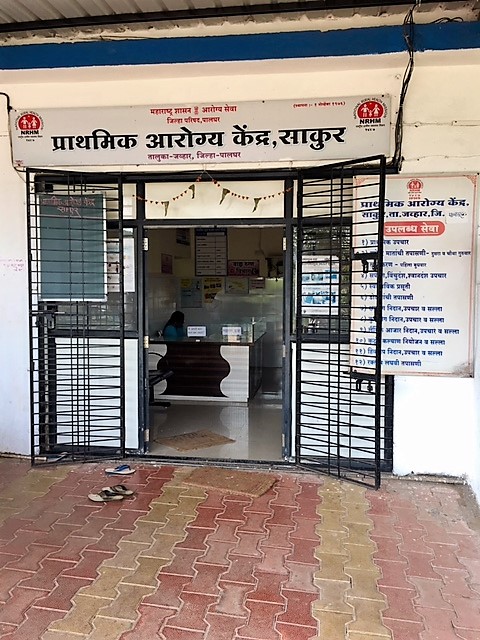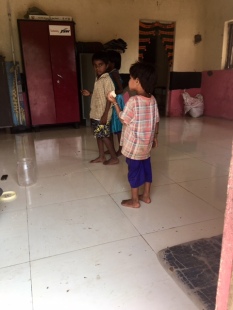Bill Gates, the world’s richest man and founder of the Bill and Melinda Gates Foundation said last year that if he could have a magic wand to solve any global health problem, he would use it to eradicate malnutrition from the world.
As a current SBI YFI fellow for 2016/17, my fellowship project is focussed towards health interventions to tackle malnutrition in Jawhar block, Palghar district in Maharashtra, India. Till September this year (2015-16) it was reported that over 254 children (aged 0-5 years) succumbed to malnutrition in Palghar district. Here, malnourishment is not an exception but a norm. The worse-affected areas in Palghar are Jawhar and Mokhada blocks, where the number of infant and child deaths increased historically in comparison to the last two years.
For the purpose of research and better understanding of the ground realities, I thought it was pertinent to visit the key stakeholders and informants working in public health profession and related domains in and around the Jawhar area.
Preliminary meetings and interviews with various stakeholders suggested that malnutrition issue is a multi-dimensional issue and not caused solely due to nutritional deficiencies. Understanding the profundity of this enormous issue seemed an uphill task in itself, let alone tackling the issue.
First meeting that was scheduled was with a gynaecologist & obstetrician working at a hospital in Jawhar zilla. Both formal and informal discussions to understand malnutrition issue in Jawhar unravelled some of the most non-conventional factors leading to the grave issue of under-nourishment and malnutrition in that area. The primary reasons reported by the doctor was early marriage, erratic daily meal intake frequency among children, seasonal migration (for better and alternate source of employment and income), lack of awareness of institutional deliveries (home deliveries carried out by inexperienced Dai or the traditional birth attendants), cultural barriers and superstitions (reduced food intake during pregnancy period with a belief that this would reduce labour pains and thus lead to easier and faster delivery of the child!) and lack of ante-natal care (ANC) and post-natal care (PNC).
Second in line was a meeting with medical officers at the Primary Health Centres (PHC) in Jawhar zilla. I visited two PHCs; one PHC that I visited was located in Sakur village and the other one in Jamsar village. The medical officers were very helpful as well as concerned about the malnutrition issue in Jawhar. Though, there was a slight reluctance among the Government health officials and stakeholders to give unbiased and symmetric information about the nitty-gritty of the malnutrition issue plaguing Palghar district especially the Jawhar zilla. The Medical Officer (MO-in charge) elucidated the reasons exacerbating the malnutrition issue in Jawhar, that is, poverty, illiteracy, child marriages, high total fertility rate (TFR), among others.

Furthermore, another peculiar factor that might have contributed negatively is the laxity of the State Government’s implementation and execution of the policies that had been laid out, post taking into account recommendations of various committees, etc. There are a multitude of such instances, where proactive Government action has been missing and that have worsened the ground situation with respect to malnutrition. One recent example is that in spite of the furore over child malnutrition deaths, the Maharashtra Government was unable to allot a sum of Rs 2,130 million to re-start the village child development centres (VCDC) to treat critical cases of child malnutrition across the State. Most VCDCs had shut down in August last year after the National Rural Health Mission (NRHM) abruptly stopped funding them. Since then, there has been a lot of ambiguity on the delay in allotting funds for such a critical programme.
After meeting the public health professionals, I also wanted to get an opinion from the Anganwadi centres (AWCs) and the Anganwadi workers (AWWs) per se to get an in-depth knowledge about the challenges faced on a day-to-day basis. I surveyed the AWCs in a select few villages in Jawhar and was broadly satisfied with the hygiene practices there. The kitchen and the food utensils were clean and the food ration was organised and stored very systematically in cupboards and the available storage spaces. There was proper coding of the food items as well. But, there is always more to it than meets the eye. It came to my knowledge that the quality and taste of some of the food items was questionable and not up to mark. The concerned AWW informed me that there were always a few children throwing up or avoiding certain food items like porridge, etc. She complained that the prescribed recipe of porridge (prescribed by the Government) tastes so bad that it is in reality, inconsumable. In her words, “even the animals would refuse to have it!”


I also had an opportunity to interact with a local NGO working on maternal and child health (MCH) issues. An NGO worker explained that lack of primary education and high school drop-out rates (particularly adolescent girls) was one of the primary contributing factors to a high number of early marriages in the villages in Jawhar zilla. This further result in higher number of women suffering from iron deficiency disorders such as anaemia, etc. This makes malnutrition not only multi-dimensional but also an inter-generational phenomenon. It is this vicious cycle of malnutrition that leads to health crisis and is no less than an epidemic.
For the purpose of getting a holistic view of the issue, I also visited a tribal ashram shala (residential school) in Vinwal and Walwanda village in Jawhar and met the school principal there. The principal was very blatant in his views regarding changes in Government policies. The food provided to the children at the school has undergone various changes in the past few years. This has also resulted in a change in meal timings. School children usually get breakfast by 8AM and the dinner is served at around 5PM. The next meal is again breakfast on the following day. In essence, there is an average meal-time gap of approximately 15 hours or so. This indirectly leads to malnutrition and impedes child growth and development.

After all these stakeholder meetings, I have come to the conclusion that malnutrition is definitely a multi-dimensional issue and all these contributing critical issues need to be tackled from all the fronts simultaneously and not separately. There are all these factors contributing in one form or the other that has led Jawhar block and Palghar district to the brink of a health crisis.
It is very unfortunate that in a country like India, where the economy is growing at a fast pace and competing with the strongest of the global economies, it is home to the largest number of malnourished children in the world. Rising malnutrition is not only a health crisis but also a ticking economic bomb. 44 million Indian children under 5 are stunted, hindering their learning capabilities and thus impacting the lifetime earnings when compared to their healthy peers. One only needs to delve a little deep to understand that all this will come around one day to haunt India and the economy. The lost wages would cost very dearly to the Indian economy running into billions of dollars. Empirical studies in the past have shown that when a country conquers malnutrition, the GDP can raise 2-3% per year. Addressing malnutrition will be a turning point in the health and prosperity of the country. Hundreds of deaths occurring every year in Palghar district are a matter of shame not only for Maharashtra, but a “national shame”. Ending it will be a national triumph.
Very well documented , portrayed the real issues. Moreover, population explosion has to be checked as with the economic resources available all steps undertaken are negated.
Sent from my iPad
>
LikeLiked by 1 person
Thanks much! Keep reading and keep commenting.
LikeLike